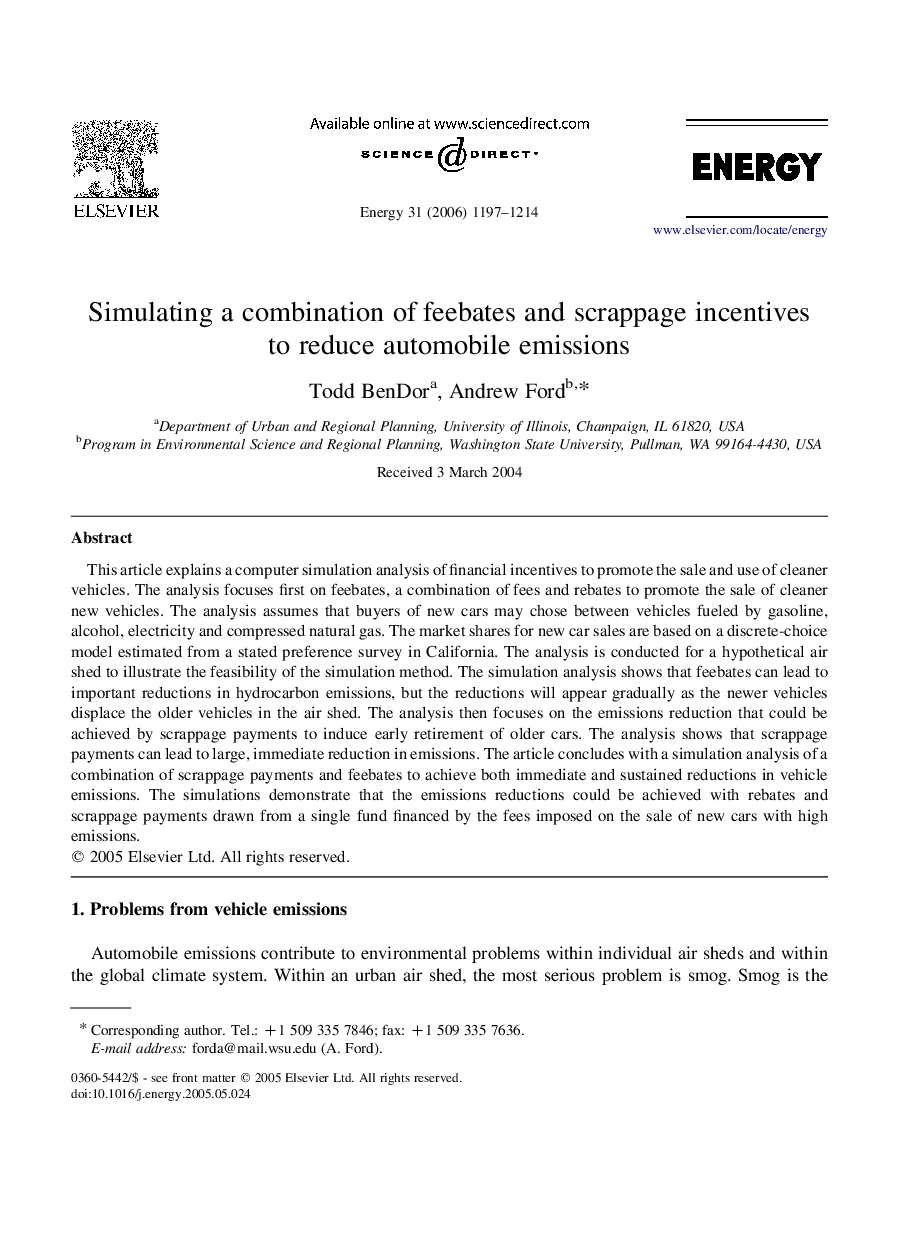| Article ID | Journal | Published Year | Pages | File Type |
|---|---|---|---|---|
| 1736433 | Energy | 2006 | 18 Pages |
This article explains a computer simulation analysis of financial incentives to promote the sale and use of cleaner vehicles. The analysis focuses first on feebates, a combination of fees and rebates to promote the sale of cleaner new vehicles. The analysis assumes that buyers of new cars may chose between vehicles fueled by gasoline, alcohol, electricity and compressed natural gas. The market shares for new car sales are based on a discrete-choice model estimated from a stated preference survey in California. The analysis is conducted for a hypothetical air shed to illustrate the feasibility of the simulation method. The simulation analysis shows that feebates can lead to important reductions in hydrocarbon emissions, but the reductions will appear gradually as the newer vehicles displace the older vehicles in the air shed. The analysis then focuses on the emissions reduction that could be achieved by scrappage payments to induce early retirement of older cars. The analysis shows that scrappage payments can lead to large, immediate reduction in emissions. The article concludes with a simulation analysis of a combination of scrappage payments and feebates to achieve both immediate and sustained reductions in vehicle emissions. The simulations demonstrate that the emissions reductions could be achieved with rebates and scrappage payments drawn from a single fund financed by the fees imposed on the sale of new cars with high emissions.
